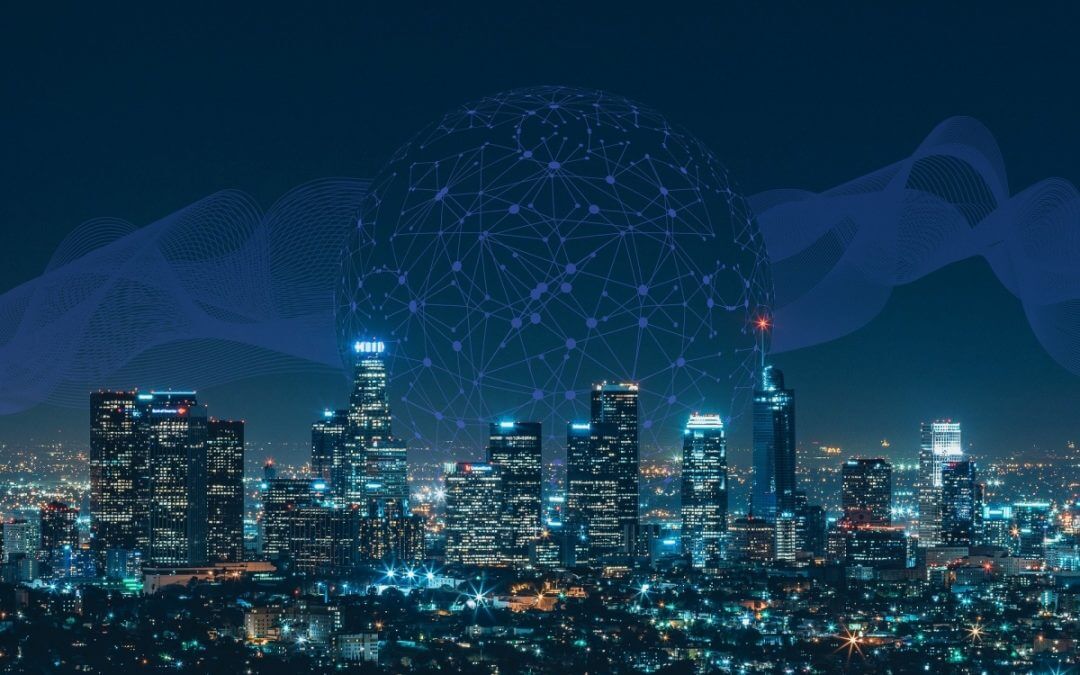Table of Contents
Cramped neighbourhoods, traffic-ridden roads, polluted grounds, and crime-filled cities are not unusual in this day and age. Most of us are familiar with how chaotic our own cities can get. You either find yourself in a crowded square with some loitering tourists or stuck in a traffic jam with angry, honking drivers. One thing is certain: we are in dire need of sustainable smart cities.
We need cities that can anticipate our needs like, ease our use of public transportation, improve solid waste management, allow us access to the internet, increase urban mobility, and most of all, cities that can help the planet breathe again. This urgent call for sustainability started around 5 years ago, yet we were limited by our technology at that time. But as our technology became more advanced, we are now finally able to bring these visions for smart and sustainable cities to life.
What makes a City Smart?
What is a smart city? At the time of writing, the term ‘smart city’ refers to a framework composed of information and communication technologies (ICT). These technological tools will be utilised to develop, deploy, and promote sustainable development practices to address the challenges that many highly-urbanised countries are facing nowadays.
Numerous governments around the globe are racing to infuse technology in just about every aspect of their city’s operations. From citizen engagement and e-governance to public transportation and infrastructure, cities are laced with innovative smart city technology on every corner.
Also, Learn about how smart outdoor furniture work.
Why do we need Smart Cities?
Cities all over the world are affected by the growing threat of climate change, overpopulation, corruption, and so on. Crime rates have swollen over the years and have to be stopped immediately. Resources are now at an all-time low, and governments are growing weary of trying to control cities that use more and more of these resources daily.
The concept of a smart city was designed in a way that will enable the reduction or, at the very least, the mitigation of these pertinent challenges. Smart cities are designed to save energy, thus saving valuable resources and paving the way for sustainable city operations.
Aside from that, smart cities also aim to encourage better living among their residents. Transport and commuting will be made easier with the help of apps and systems that can direct you to a parking space, for instance, or provide better traffic management solutions in the smart city. Countries are making efforts towards developing and building smart cities.
Check Out: Key Elements of Smart City
Sustainable Technology Ideas for Smart Cities
Below are some examples of new sustainable technologies that cities all over the globe are integrating into their systems in order to transform into smart sustainable cities. The more you know about these technologies, the more you understand the urgency of designing and developing smart sustainable cities. These are some of the reasons why the smart city is so important.
Internet of Things
The Internet of Things (IoT) is changing much about the world we live in; from the way we drive to the way we make purchases. Sophisticated sensors and chips are embedded in the physical devices that surround us, each transmitting valuable data. This data allows these devices to work together.
Whether we’re improving the production of a factory, giving city residents real-time updates on where to park, or monitoring our personal health, the common IoT platforms bring this information together. This IoT platform can be thought of as a data collection technology that a smart city uses to do several things. IoT technology is the pillar to create a smart city.
With the help of this powerful platform, cities can now improve infrastructure, public utilities, services, and others. For instance, Los Angeles has implemented an intelligent transport solution to control its traffic flow. IoT and smart cities have to go hand in hand if they want a sustainable smart city. Many countries have since followed suit.
Cloud Technologies: The Storage and Data Processing Powerhouse
Massive storage capacity, scalability, security, and data processing of users and enterprises are all necessary for the development of a smart city. Security is the priority when building one, and then transforming data into useful information comes second.
This is where cloud technology can come in. This behemoth of a system serves as a storage and analysis system for the data used in everything connected in a smart city. Images and video data, for instance, will need to be carried through the cloud to be safely transmitted from one device to another. Bearing in mind, of course, that no other confidential information gets breached.
Aerospatial Technologies: The Window to Better Future
Learning more about our world has never been more important. By investing in aerospatial and geospatial technologies, we get to learn more about the world we live in. This way, we can develop programs to improve our general security, environment, natural disaster prevention, smart mobility, etc. Smart cities are not only transforming their own cities, but they also have impacts on a global scale as well.
Blockchain Technologies: The Ultimate Security Solution
As the name suggests, a blockchain is a chain of blocks that contains information. Blockchain records and stores transaction information. It then exchanges these data between distributed gadgets, resulting in a seamless and cost-efficient process. It is laced with advanced encryption technology; making it secure enough to keep in smart cities.
Also, Check Out: Innovative Tech for Green Event Marketing
Smart Cities in Australia: How You Can Be a Part of This Change
Australia and its states, territories, and cities are taking the first steps to transition into smart cities. Here at Eco Renewable Energy, we uphold products, services, and practices that are sustainable. We also support initiatives that will lead us closer to developing smart cities with sustainable technology, all over the country. We have worked on numerous projects across Australia to help create smarter cities.
Learn more about how we can help you in this regard and work with Eco Renewable today. Together, we can build smart cities in Australia for a better tomorrow.


Recent Comments